︎ Complete Well
A Climate Wellness SphereComplete Well provides health resources within an enclosed bubble to counteract extreme climate effects, such as mega-fires, air pollution, and unstable water and food systems. As habitable spaces shrink, it ensures safe, accessible primary care through online systems.
By Lauren Jenkins ︎ , Rachel Liu ︎, Srinjayee Saha ︎, Irene Wei ︎, Jintao Zhai ︎

Why
Alex and her family are facing health challenges due to climate conditions. The Complete Well proposal seeks to improve quality of life by addressing these issues. It suggests solutions such as enhancing air quality, ensuring access to outdoor spaces, and providing healthcare, adapting to the changing climate to meet specific needs. This approach is crucial for their health and well-being.
How
Complete Well aims to address health impacts from climate change by integrating air purification and primary care into adaptive environments. It offers accessible care locations and programs tailored to individual needs, supported by online or AI caregivers, creating optimal conditions for managing health symptoms.
What
Complete Well’s design interventions aim to improve respiratory health and access to care amid climate change, protect against environmental diseases, and support mental health. It emphasizes developing flexible, connected spaces equipped with primary care resources to tackle future health challenges.
So What
Uncertainty from a warming climate disrupts lifestyles and farming, demanding health strategies for worst-case scenarios. Dystopia is a critical concern for health resource access and should be addressed proactively. By 2070, areas south of Michigan will see a 5-10 degree annual temperature increase, despite emissions control. How do we design for such an ever-changing present?
Design To Outcomes
Complete Well aims to provide primary and human health resources from an enclosed health bubble. This stems from the extreme temperatures and weather patterns brought on by climate change. Climate change’s ramifications include increasing mega-fires that destroy habitats, exposing more air pollution, causing poor lung health, and less reliable water and food support systems. Due to the slow encroaching of inhabitable space on our planet, Complete Well creates a new space for primary care to be received within a safe environment through online, accessible systems due to the increasing effects of climate change.
By 2070, 28 million people can face lasting climate change effects on their livelihood from mega-fires, sea level rise, low farm crop yields, and an impact on economic damage from climate. As stated by the EPA, increased health impacts, such as respiratory illness, environmental diseases, and mental health, will be standard. We hypothesize that our proposed design, Complete Well, will provide for the unpredicted future by creating health bubbles to respond to human health needs in primary care, environmental quality, and social adaptation through accessible structures.
The design intervention of Complete Well focuses on three central moments to address the uncertainty of climate change and primary care resources. Focusing on the Now, Complete Well aims to create a primary care health hub. Primary care will include instant wellness interventions in healthcare centers and convenient facilities such as pharmacies and community centers to give personalized care through air-purified rooms, hydration stations, dietary needs, and light therapy. The Near intervention focuses on air purification and care structures by providing fresh air for people with respiratory illnesses online with assistance from a primary caregiver. Structures will be accessible at convenient locations: outdoor public spaces, transit stations, and institutions. Lastly, Complete Well’s future design interventions incorporate breathable AI healthcare structures. The urban scale bubble serves as an air purifier directed to curing individuals with assistance from AI caregivers who work to care for people and heal the outdoor environment of pollutants.
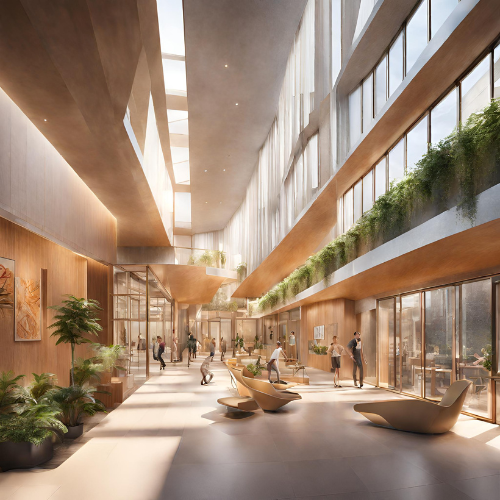
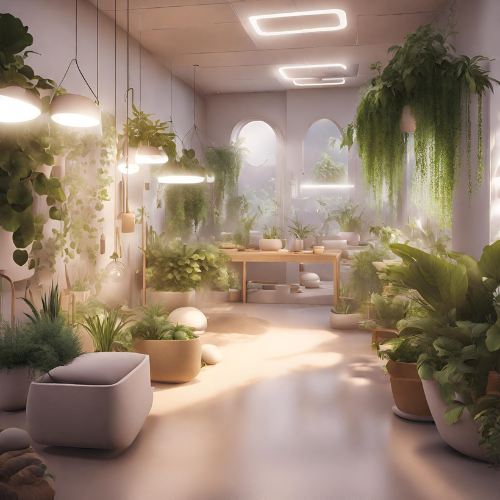

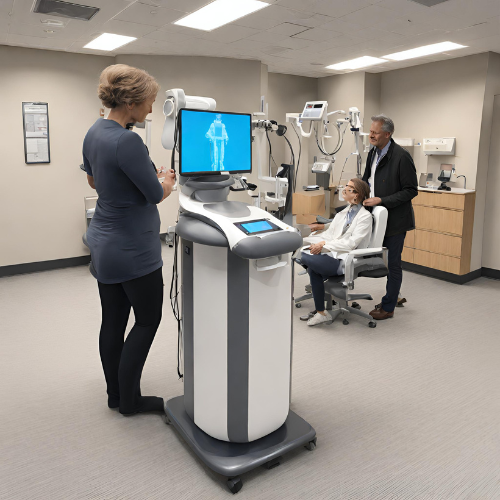
Now: Health Hubs
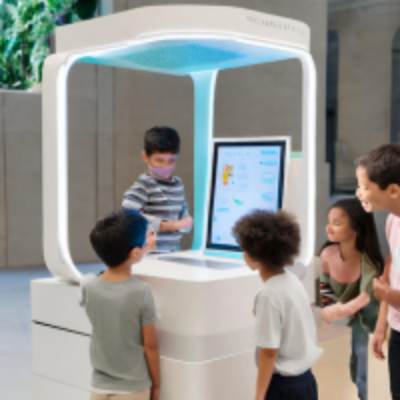
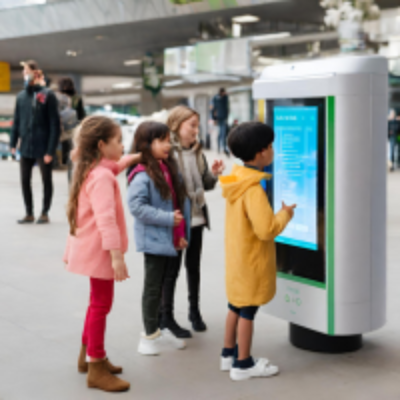
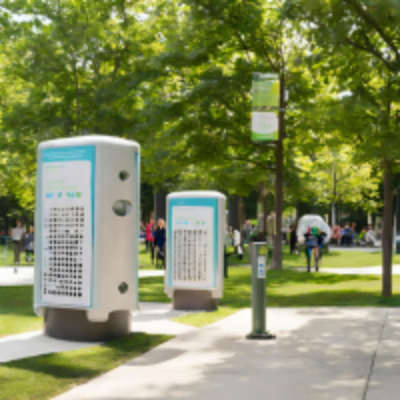
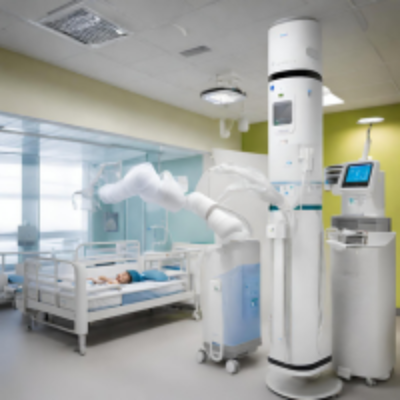
Near: Air Purification Structures

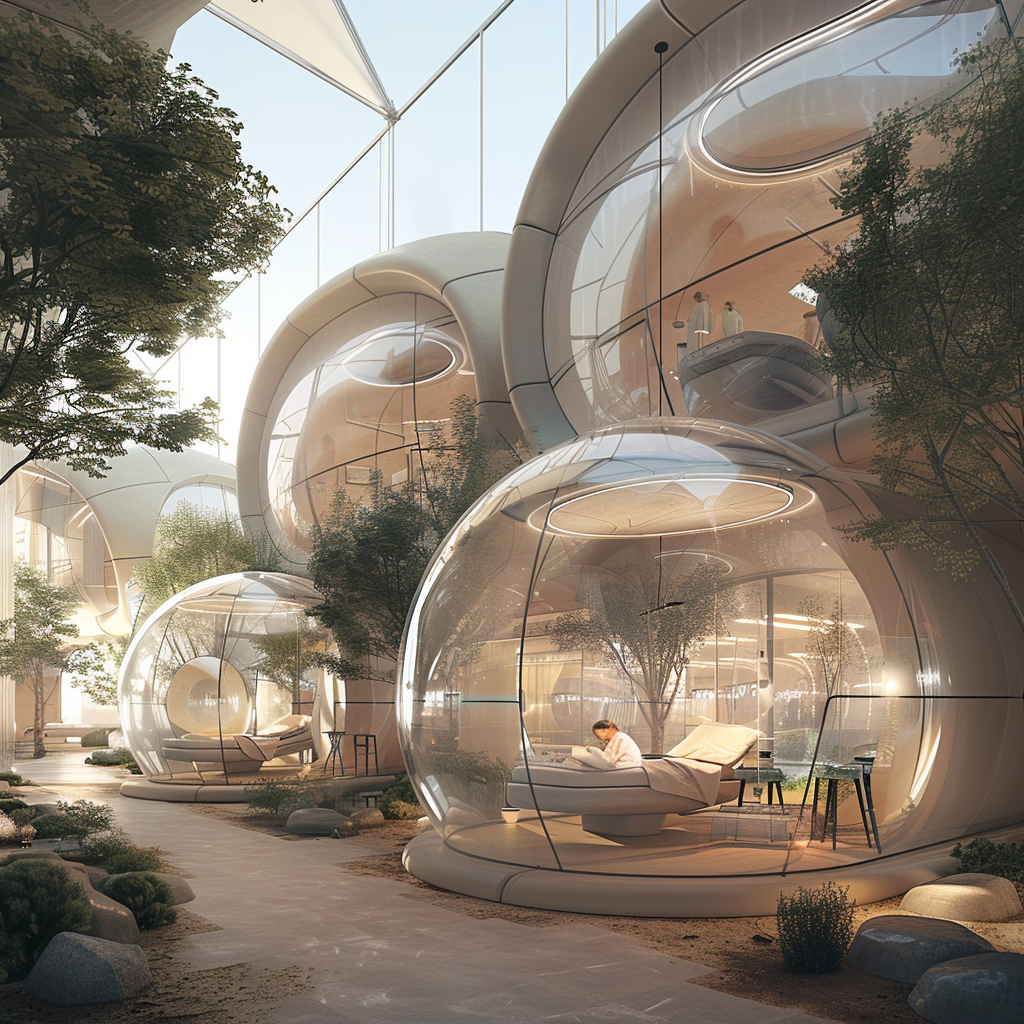
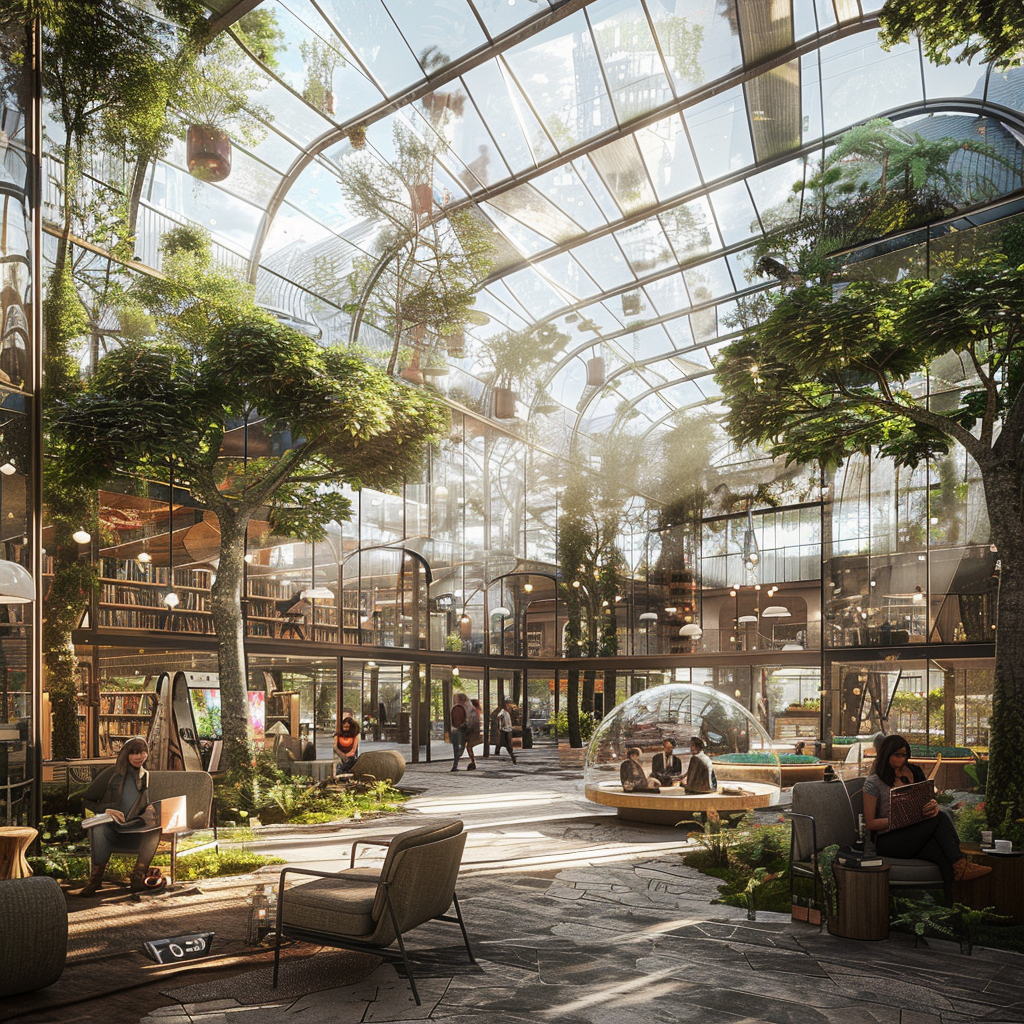

Far: Complete Nest
Links to Follow:
︎︎︎Two Page Report
︎︎︎Miro Board
︎
Works Cited
2. “Climate Change Over the Next 100 Years.” White House Archives, n.d. https://clintonwhitehouse5.archives.gov/Initiatives/Climate/next100.html.
3. Drawing Detroit. “Climate Change in Michigan–Now and in the Future.” Drawing Detroit, 19 Jan. 2023, http://www.drawingdetroit.com/climate-change-in-michigan-now-and-in-the-future/.
4. “Future of Climate Change | Climate Change Science | US EPA.” US EPA, n.d. https://climatechange.chicago.gov/climate-change-science/future-climate-change#ref1.
5. ProPublica. “New Climate Maps Show a Transformed United States.” ProPublica, n.d. https://projects.propublica.org/climate-migration/.
6. “Regional Health Effects - Midwest | CDC.” CDC, n.d. https://www.cdc.gov/climateandhealth/effects/Midwest.htm.
7. US EPA. “Climate Change Impacts on Health | US EPA.” US EPA, 16 Nov. 2023, https://www.epa.gov/climateimpacts/climate-change-impacts-health.